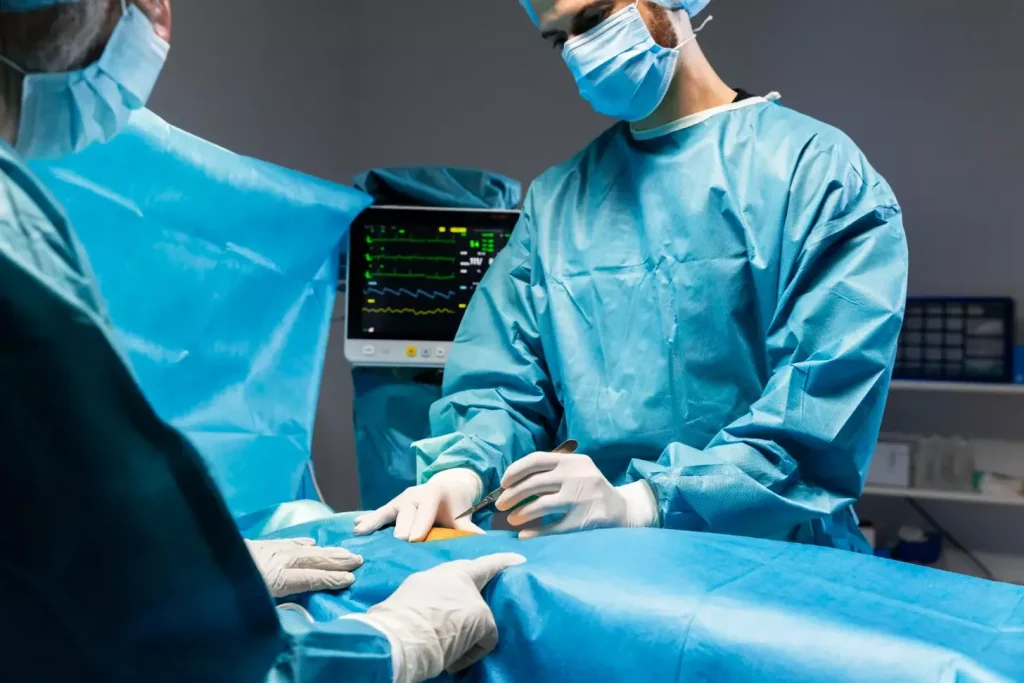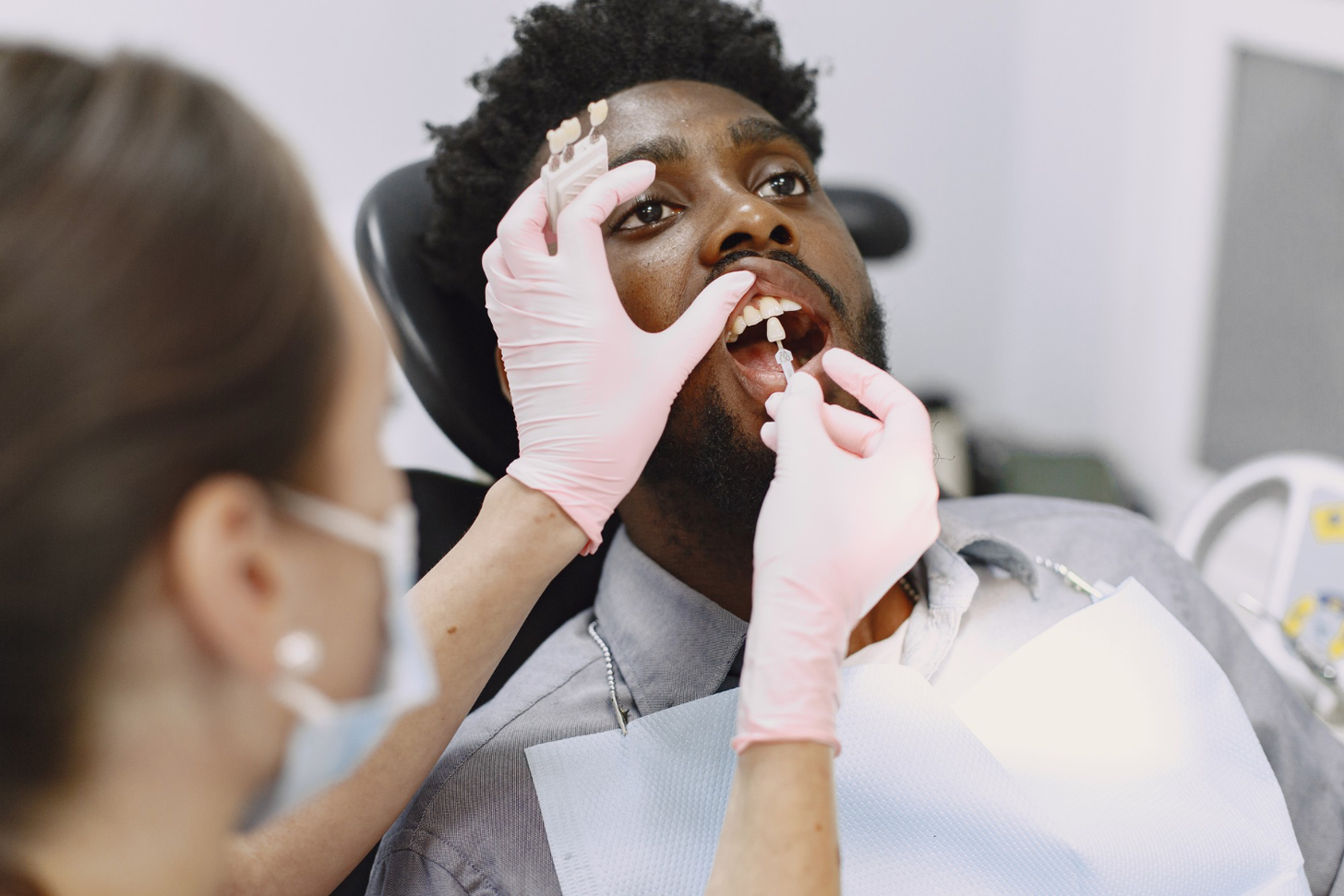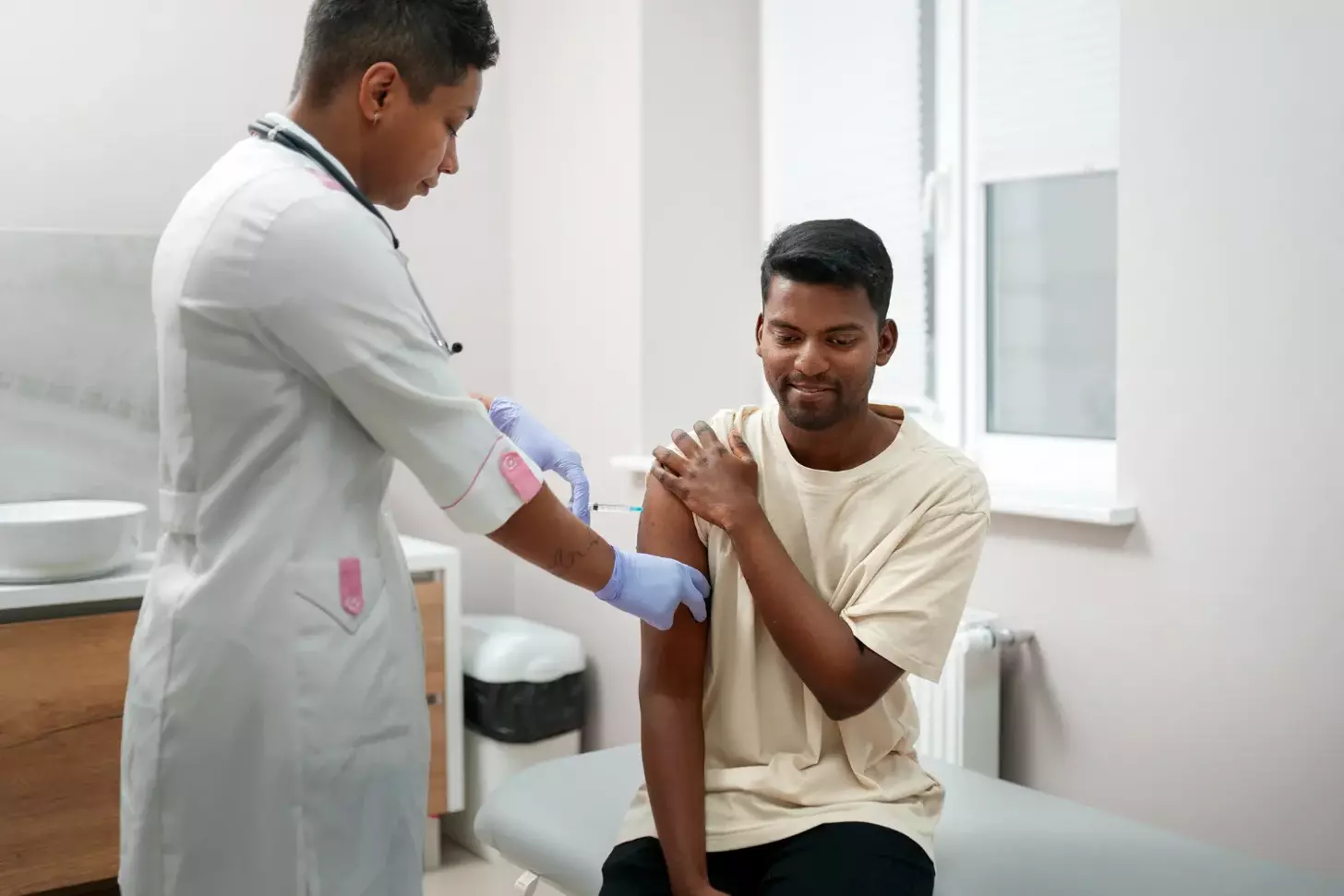Last Updated on November 27, 2025 by Bilal Hasdemir

When you face bladder cancer, knowing about BCG treatment side effects is key before starting intravesical therapy. AtLiv Hospital, we stress the need to understand these side effects. This ensures we give our patients the best care possible.
BCG, or Bacillus Calmette-Guérin, is a key part in treating non-muscle invasive bladder cancer. As a top healthcare provider, we use BCG therapy. This helps us improve outcomes and safety for all our bladder cancer patients.
Key Takeaways
- Understanding BCG therapy is vital for bladder cancer patients.
- BCG is a common treatment for non-muscle invasive bladder cancer.
- Knowing about possible side effects is important for full care.
- Liv Hospital offers the latest, patient-centered care for bladder cancer.
- Intravesical therapy is a big part of bladder cancer treatment.
Understanding BCG Therapy for Bladder Cancer
Intravesical BCG treatment has changed how we fight non-muscle invasive bladder cancer. It uses the body’s immune system to fight cancer cells. This is a big step forward in treating bladder cancer.
What is BCG Immunotherapy?
BCG (Bacillus Calmette-Guérin) immunotherapy uses a weakened form of tuberculosis bacteria. It’s given directly into the bladder to fight cancer. This method gets the immune system to attack cancer cells in the bladder.
BCG immunotherapy provokes an immune response that fights cancer cells and stops cancer from coming back. It’s a key treatment for non-muscle invasive bladder cancer.
How Intravesical BCG Treatment Works
The treatment starts with a catheter being put into the bladder. Then, BCG solution is added. The patient holds it for about two hours before urinating. This lets the BCG reach the bladder lining and start an immune response.
“The intravesical administration of BCG represents a targeted approach to treating bladder cancer, minimizing systemic side effects while maximizing local immune response.”
Effectiveness for Non-Muscle Invasive Bladder Cancer
BCG therapy is very effective against non-muscle invasive bladder cancer. It makes the immune system attack cancer cells. This lowers the chance of cancer coming back or getting worse.
Understanding BCG therapy is important for patients and doctors. Knowing how it works and its benefits helps make better treatment choices.
The Intravesical Administration Process
To understand the intravesical administration process, it’s essential to know how BCG is delivered directly to the bladder. This process involves several critical steps that ensure the effectiveness of the treatment.
Preparation for BCG Instillation
Before the BCG instillation, patients undergo a series of preparations. It’s vital to follow these steps carefully to minimize side effects and ensure treatment success.
- Patients are advised to avoid fluids for a few hours before the procedure to prevent an overly full bladder.
- A urine test is often conducted to check for any urinary tract infections, which could contraindicate the BCG treatment.
- Patients are also informed about the possible side effects and the importance of post-treatment care.
The Procedure Step-by-Step
The intravesical BCG administration is performed in a clinical setting by a healthcare professional. The procedure involves:
- Inserting a catheter into the bladder through the urethra.
- Instilling the BCG solution into the bladder via the catheter.
- Retaining the BCG solution in the bladder for approximately two hours before voiding.
Post-Treatment Instructions
After the BCG treatment, patients are given specific instructions to follow. Adhering to these guidelines is vital for minimizing side effects and ensuring treatment efficacy.
- Patients are advised to maintain good hygiene practices, such as washing their hands thoroughly after using the bathroom.
- For the first 48 hours post-treatment, patients should sit while urinating to minimize splashing.
- It’s also recommended to disinfect the toilet with bleach after each use for 15-30 minutes to prevent the spread of the BCG bacteria.
By carefully following these steps and guidelines, patients can maximize the benefits of intravesical BCG therapy while minimizing its side effects.
Common BCG Treatment Side Effects You Should Expect
Knowing about BCG treatment side effects is key for those with bladder cancer. BCG immunotherapy works well but comes with side effects that can affect daily life.
Frequency and Severity Overview
Side effects from BCG treatment vary by person. Symptoms like needing to pee a lot, cystitis, blood in urine, and flu-like feelings are common. Many patients face these issues, with pee problems being the most common.
For more on BCG treatment, check out Cleveland Clinic’s BCG Treatment page.
Duration of Side Effects
How long side effects last can differ. Most pee problems go away in a few days to weeks after treatment. But, some might last longer, like needing to pee a lot or feeling uncomfortable.
Managing these side effects is key to staying comfortable and sticking to treatment. Doctors might prescribe meds for pee problems or other ways to handle reactions.
Differentiating Normal Reactions from Complications
Telling normal side effects from serious problems is important. While pee problems are usually okay, signs like high fever, bad bladder pain, or a lot of blood in pee mean you need to see a doctor.
Knowing when to get help is vital. This way, patients can handle BCG treatment better.
Urinary Symptoms: Frequency, Urgency, and Dysuria
BCG therapy is a key treatment for non-muscle invasive bladder cancer. It often causes urinary side effects. Patients may feel a range of symptoms due to the BCG’s irritation.
Why These Symptoms Occur
BCG therapy leads to symptoms like frequency, urgency, and dysuria. These happen because of the bladder’s inflammatory response. The BCG instillation irritates the bladder lining.
This irritation can cause symptoms that vary in severity. Knowing these symptoms are part of the treatment can help patients prepare.
Managing Urinary Discomfort
It’s important to manage urinary discomfort for patients on BCG therapy. Several methods can help:
- Staying well-hydrated to help flush out the bladder
- Avoiding irritants such as caffeine and spicy foods
- Using urinary analgesics as prescribed by a healthcare provider
- Implementing pelvic floor exercises to strengthen the muscles around the bladder
| Symptom | Management Strategy | Expected Outcome |
|---|---|---|
| Frequency | Fluid management, avoiding irritants | Reduced frequency of urination |
| Urgency | Pelvic floor exercises, bladder training | Improved bladder control |
| Dysuria | Urinary analgesics, warm compresses | Reduced pain during urination |
Timeline for Symptom Resolution
The time it takes for symptoms to go away varies. Usually, they start to improve a few weeks after BCG therapy.
It’s key for patients to keep up with their healthcare provider. This helps monitor symptom improvement and address any issues.
Cystitis and Bladder Irritation After BCG
BCG therapy can cause cystitis, which irritates the bladder’s lining. This condition leads to inflammation and uncomfortable symptoms. Knowing these symptoms helps patients manage their condition better.
Recognizing Symptoms of Cystitis
Symptoms of cystitis after BCG treatment can be different for everyone. They can affect daily life. Common symptoms include:
- Frequent urination: Needing to urinate more often than usual.
- Urgency: A sudden, intense need to urinate.
- Dysuria: Pain or burning while urinating.
- Bladder pain: Persistent discomfort or pain in the bladder area.
A leading urologist notes, “Cystitis is a common side effect of BCG therapy. Its severity can vary.”
“Managing cystitis effectively requires understanding its symptoms and implementing appropriate treatment strategies.”
Treatment Options for Bladder Inflammation
Treating cystitis involves easing symptoms and reducing inflammation. Here are some recommended treatments:
- Hydration: Drinking plenty of water to flush out the bladder.
- Bladder antispasmodics: Medications that reduce bladder spasms and discomfort.
- Pain management: Over-the-counter pain relievers for pain and discomfort.
If symptoms don’t improve, further medical help may be needed. It’s important to follow up with your healthcare provider.
Preventive Measures for Future Treatments
To reduce the risk of cystitis in future BCG treatments, consider these preventive measures:
- Pre-treatment preparation: Ensuring the bladder is healthy before treatment.
- Post-treatment care: Following recommended post-treatment instructions to reduce irritation.
- Lifestyle adjustments: Avoiding irritants like spicy foods or caffeine that can worsen bladder irritation.
Understanding cystitis and taking proactive steps can help manage this side effect. This improves the overall treatment experience.
Hematuria: Blood in Urine Following Treatment
After BCG treatment for bladder cancer, patients might see blood in their urine. This is called hematuria. It can be tiny amounts or visible blood.
When Blood in Urine is Expected
Hematuria is a common side effect of BCG therapy. It often happens during or right after treatment. The bleeding usually gets less over time as the bladder heals.
Mild hematuria is usually okay and a normal reaction to treatment. But, it’s important to watch how long and how much bleeding happens. This helps make sure it doesn’t get worse.
When Hematuria Becomes Concerning
While some bleeding is expected, there are times when it’s a worry. If you have heavy bleeding that won’t stop, or if bleeding lasts a long time, call your doctor.
Also, if you see clots in your urine or have other symptoms like a lot of pain or trouble peeing, get help fast.
Managing This Common Side Effect
Managing hematuria means taking care of yourself and getting medical help when needed. To lower the chance of bleeding, drink lots of water. This helps clean out your bladder.
Your doctor might suggest bladder instillations with medicines to cut down on inflammation and bleeding. It’s key to follow your doctor’s advice after treatment to avoid problems.
- Drink plenty of water to help flush out your bladder
- Avoid irritants like spicy foods or caffeine that can make bladder irritation worse
- Follow your doctor’s instructions for post-treatment care
Systemic Reactions: Fever and Flu-Like Symptoms
BCG therapy can cause fever and flu-like symptoms. It’s important to recognize and manage these reactions properly. While BCG treatment is usually well-tolerated, some people may experience these effects due to their immune system’s response.
Understanding systemic reactions to BCG treatment is key. These reactions are usually a sign that the body’s immune system is working. This can sometimes cause symptoms that feel like the flu or a fever.
Why Systemic Symptoms Develop
Systemic symptoms like fever and flu-like symptoms happen because the BCG vaccine triggers a big immune response. This response shows that the treatment is effective, as the immune system is reacting to the BCG bacteria.
Several factors can lead to systemic symptoms:
- The dose and potency of the BCG vaccine
- The individual’s immune response to the BCG bacteria
- Previous exposure to BCG or similar mycobacteria
Experts say systemic reactions are a sign that BCG therapy is working. This shows the complex link between the immune response and BCG treatment’s effects.
Managing Fever and Malaise
Managing fever and malaise from BCG treatment requires self-care and sometimes medical help. Patients should stay hydrated and rest to help their body recover.
To manage fever, over-the-counter medications like acetaminophen or ibuprofen can help. Always follow a healthcare provider’s advice to avoid side effects or interactions.
“Adequate hydration and rest are key to recovering from BCG therapy’s systemic effects.”
Duration of Flu-Like Symptoms
The time flu-like symptoms last after BCG treatment varies. Usually, these symptoms are short-lived and go away in a few days.
Several factors can affect how long symptoms last:
- The severity of the immune response
- The patient’s overall health and immune status
- The specific treatment protocol used
We suggest patients watch their symptoms closely and talk to their healthcare provider if they last too long or are severe. This helps ensure the treatment plan is adjusted for the patient’s comfort and safety.
Rare but Serious BCG Treatment Side Effects to Monitor
It’s important for patients getting BCG therapy to know about rare but serious risks. BCG immunotherapy is usually safe and works well for bladder cancer. But, there are complications that need quick attention.
BCG Infection and Sepsis
One serious side effect is BCG infection or sepsis. This happens when the live bacteria in the vaccine spread beyond the bladder. Symptoms include:
- High fever (usually above 103 °F)
- Chills
- Rapid heartbeat
- Low blood pressure
- Confusion or disorientation
If you have these symptoms, get medical help right away. BCG sepsis is a serious emergency that needs quick treatment.
Granulomatous Prostatitis
Another rare side effect is granulomatous prostatitis, or inflammation of the prostate gland. Symptoms include:
- Painful urination
- Frequent urination
- Pain in the pelvic or rectal area
- Fever
This condition often gets better with NSAIDs or antibiotics. Sometimes, more serious treatment is needed.
Other Rare Systemic Complications
BCG treatment can also lead to other rare complications. These include:
- Reactive arthritis
- Epididymitis (inflammation of the epididymis)
- Hepatitis (liver inflammation)
- Pneumonitis (lung inflammation)
While these are rare, it’s key to know the risks. Tell your doctor about any unusual symptoms right away.
When to Seek Emergency Medical Care
If you have these symptoms after BCG treatment, get emergency care right away:
- Severe difficulty breathing
- Chest pain or tightness
- Severe abdominal pain
- High fever that doesn’t respond to medication
- Severe confusion or disorientation
Quick action and treatment are vital for the best results with BCG therapy.
Alternative Intravesical Treatments and Their Side Effects
Intravesical therapy for bladder cancer isn’t just BCG. Treatments like gemcitabine have their own benefits and side effects. It’s key to know how they work, what they offer, and their possible downsides.
Gemcitabine Bladder Instillation
Gemcitabine is a chemotherapy drug used for bladder cancer. It targets cancer cells in the bladder directly. This reduces the risk of side effects seen with traditional chemotherapy.
Gemcitabine is good for those who didn’t respond well to BCG or had bad side effects. Its side effects are usually mild. These can include needing to pee a lot, feeling urgent, and some discomfort.
Comparing BCG vs. Chemotherapy Side Effects
BCG and chemotherapy have different side effects when used for bladder cancer. BCG can cause flu-like symptoms, blood in urine, and irritation. Gemcitabine has fewer side effects overall but can cause bladder symptoms.
| Side Effect | BCG | Gemcitabine |
|---|---|---|
| Flu-like symptoms | Common | Rare |
| Hematuria | Common | Less Common |
| Bladder Irritation | Common | Common |
Benefits of Bladder Cancer Chemo Wash
Bladder cancer chemo wash, like with gemcitabine, has many benefits. It’s a targeted treatment that reduces systemic exposure to chemotherapy. This approach can lessen side effects and improve life quality for patients.
It can also be used with other treatments or alone for those not suited for BCG.
Conclusion: Balancing Benefits and Risks of BCG Therapy
BCG therapy has changed how we treat bladder cancer, making it more effective for non-muscle invasive cases. We’ve looked at how BCG treatment works, its side effects, and possible complications.
BCG therapy can cause side effects like urinary issues and systemic reactions. But, the good it does often makes up for the bad. The success of treatment depends on making smart choices and caring for patients well.
As we keep improving bladder cancer treatment, it’s important for patients and doctors to work together. By knowing the risks and benefits of BCG therapy, we can give the best care to those with bladder cancer.
What is BCG treatment for bladder cancer?
BCG (Bacillus Calmette-Guérin) treatment is a way to fight non-muscle invasive bladder cancer. It uses a weakened form of tuberculosis bacteria. This is put into the bladder through a catheter.
How does intravesical BCG treatment work?
This treatment boosts the immune system to attack bladder cancer cells. The BCG solution is directly put into the bladder. It triggers an immune response to kill cancer cells.
What are the common side effects of BCG treatment?
Side effects include frequent need to urinate, pain while urinating, and blood in the urine. You might also feel flu-like, with fever and tiredness.
How long do BCG treatment side effects last?
Side effects usually go away in a few days to weeks. But, some like needing to urinate often can last longer.
What is cystitis, and how is it related to BCG treatment?
Cystitis is bladder inflammation, a side effect of BCG treatment. Symptoms include pain while urinating and feeling like you need to go often.
How is hematuria managed after BCG treatment?
Hematuria, or blood in the urine, is common. To manage it, drink lots of water and avoid things that irritate your bladder. Sometimes, medical treatment is needed.
What are the symptoms of systemic reactions to BCG treatment?
Systemic reactions include fever, chills, and feeling flu-like. These happen when your immune system reacts to the BCG bacteria.
Are there any rare but serious side effects of BCG treatment?
Yes, rare but serious side effects include BCG infection and sepsis. Granulomatous prostatitis is another serious condition. These need immediate medical help.
What are the alternatives to BCG treatment for bladder cancer?
Alternatives include other treatments like gemcitabine, a chemotherapy. The right treatment depends on the cancer type and your health.
How do I manage urinary discomfort after BCG treatment?
To manage discomfort, drink lots of water and avoid irritants. Use medications as directed by your doctor to help with symptoms.
Can BCG treatment cause long-term bladder damage?
BCG treatment can have temporary side effects. But, long-term damage is rare if the treatment is done right and side effects are managed well.








